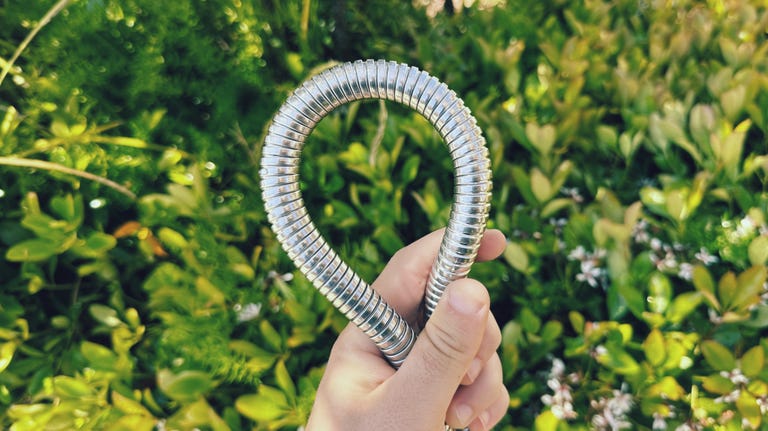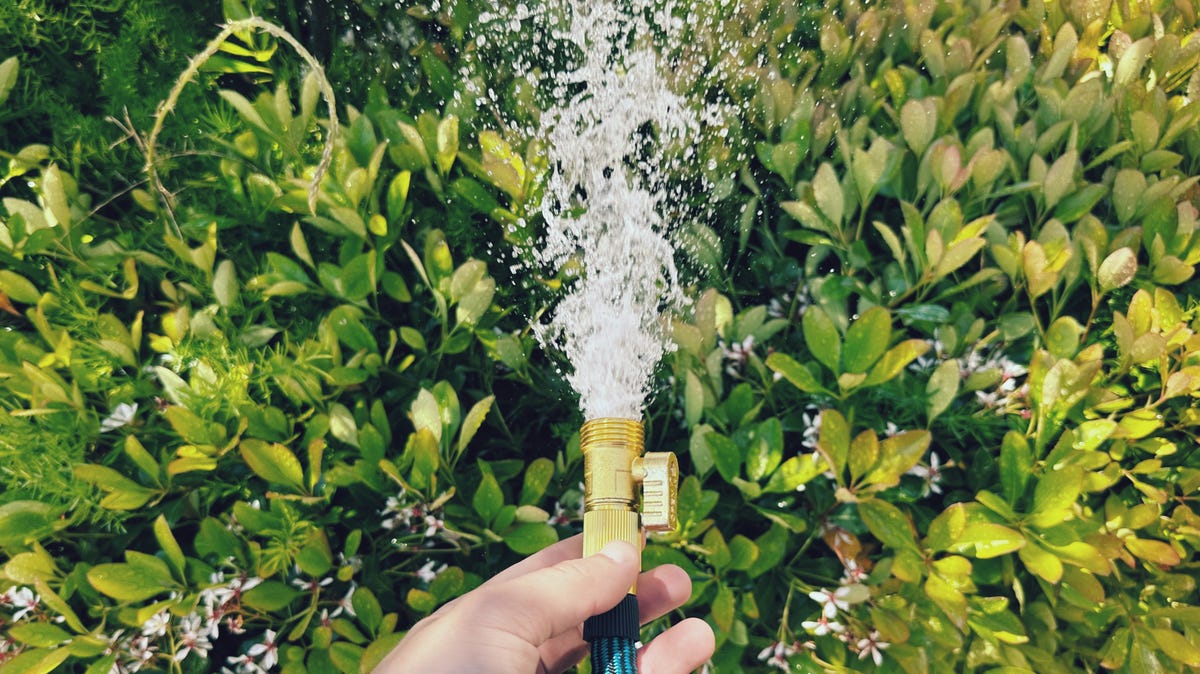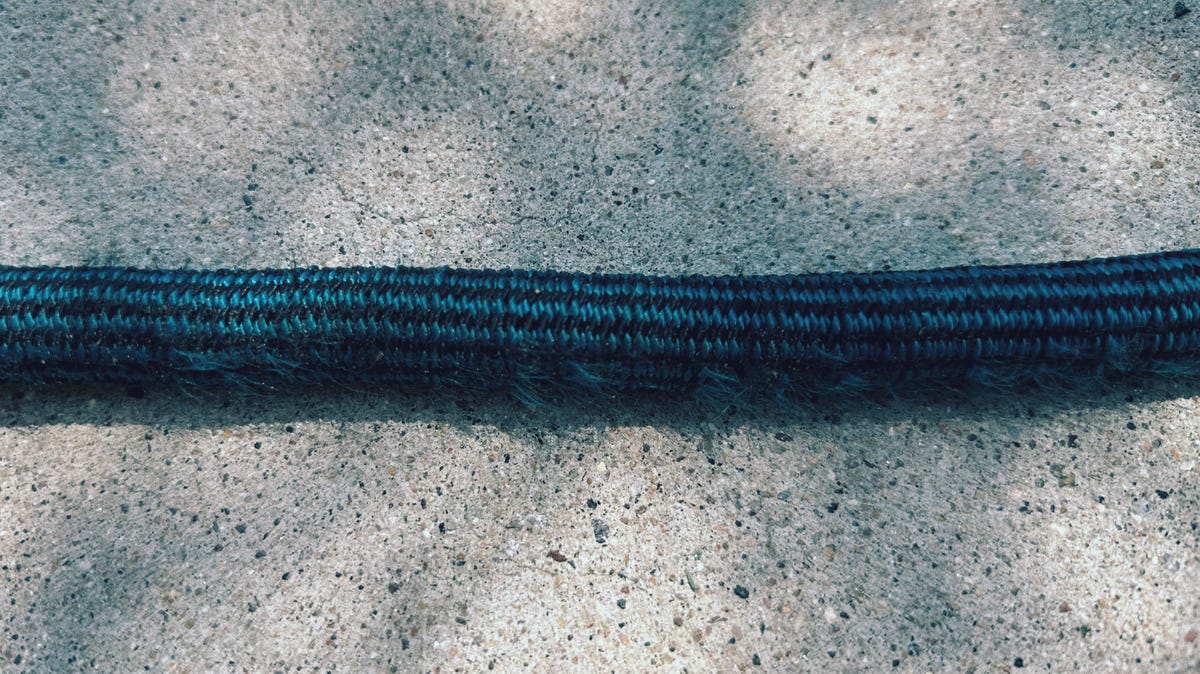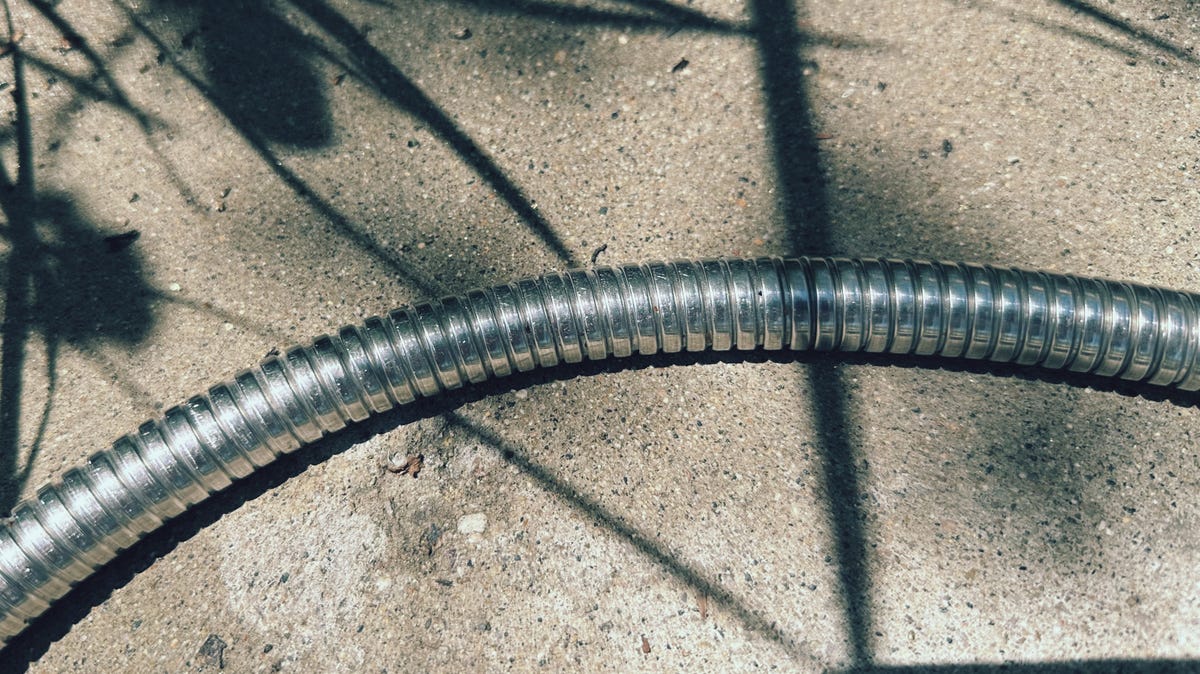
First and foremost, I used CNET’s hose testing guidelines to evaluate each product in three specific areas: connection, kink and flow rate. These performance-based tests helped identify how the hoses functioned, and also how they compared to one another.
Each hose passed the connection test, which checked to make sure none of them were leaking when screwed on to the spigot or when used with a spray nozzle. Each had a perfect connection out of the box. Each time I connected a hose to use it, I also checked the connection to confirm there were no leaks.
None of the hoses leaked at the point of connection after at least five times of screwing them on and off, either. The rubber O-ring will likely deteriorate over time, so there may be leaking in the future, but when the hoses were in new working order I didn’t see any design flaws that would lead to a bad experience right from the start.

You won’t have any kinks to worry about with the all-metal Rosy Earth Garden Hose.
Similarly, all the hoses passed the kink test, with 100% water flow when holding the hose about 2 feet from the end and wrapping it around my hand. Some of the hoses, such as the Flexzilla and the Briggs showed slight kinking and made sounds to suggest that they were on the verge of kinking, but neither of those had a slower water flow.
Beyond the standard kink test, I did notice that water was restricted in some of the hoses for other, adjacent reasons. For example, though wrapping the WeGuard fabric hose around my hand didn’t restrict the water flow, stepping on it did.
To test the flow rate of each hose, I turned on the water spigot to completely open and timed how long it took to fill a 5-gallon bucket to a line marked near the top. Then, I measured the weight of the water.

The WeGuard expandable fabric hose had the slowest flow rate of the hoses I tested.
The Flexzilla hose filled the bucket the fastest, with a speed of 1.26 pounds per second. For comparison, the slowest hose was the WeGuard, at 0.66 pounds per second. The Zero-G and Briggs and Stratton hoses both had a speed of 0.98 pounds per second, Eaduty had a speed of 0.96 pounds per second, and the Giraffe Tools Hybrid Garden Hose had a speed of 0.92 pounds per second.
The Rosy Earth Metal Hose was a little slower than most others, with a speed of 0.86 pounds per second. The hose has a narrower body, which doesn’t allow as much water through. However, I also found that the narrow design led to more natural pressure from the hose, which could be beneficial in certain use cases.
In terms of durability, I can’t predict how these hoses will fare over time, but I did want to try to see as much initial wear as I could. To do this, I dragged each of the hoses across a concrete driveway back and forth 10 times. I wanted to see how the end pieces and the hose material held up, in addition to whether the hose caused any damage to my driveway.

The fabric exterior on the WeGuard expandable garden hose frayed almost immediately after being dragged back and forth on a concrete driveway.
The most noticeable damage happened to the WeGuard fabric hose, which began fraying almost immediately. The results don’t suggest this hose could hold up very long being used exclusively across concrete or pavers.
The rubber hoses showed only the faintest of scratches, most of which wouldn’t be noticeable unless carefully inspected. I have almost no concerns about the longevity of the Eaduty or Briggs and Stratton hoses. The Flexzilla hose had no visible scratches on it, and the plastic tubing around the end of the hose took all the abrasions, but even those weren’t of consequence.

After I dragged the Rosy Earth metal garden hose across a concrete driveway 10 times, it had only very light scratches.
I was most curious to see how the Rosy Earth metal hose absorbed scratches, or didn’t. After dragging the hose back and forth, I saw that it definitely had wear marks, but they weren’t noticeable from a distance. The metal end piece scratched up visibly, but the damage didn’t seem to cause any functional issues. Thankfully, the hose didn’t leave any marks or signs that it had slid around the driveway, either.
Out of curiosity, I left all the hoses in direct midday sun for 45 minutes to see how hot they got. The rubber hoses got the hottest. They were very warm to the touch but didn’t burn my hand. The Rosy Earth metal hose, Zero-G hose and the WeGuard fabric one were each warm, but not hot. The Flexzilla hose didn’t seem to heat up at all.